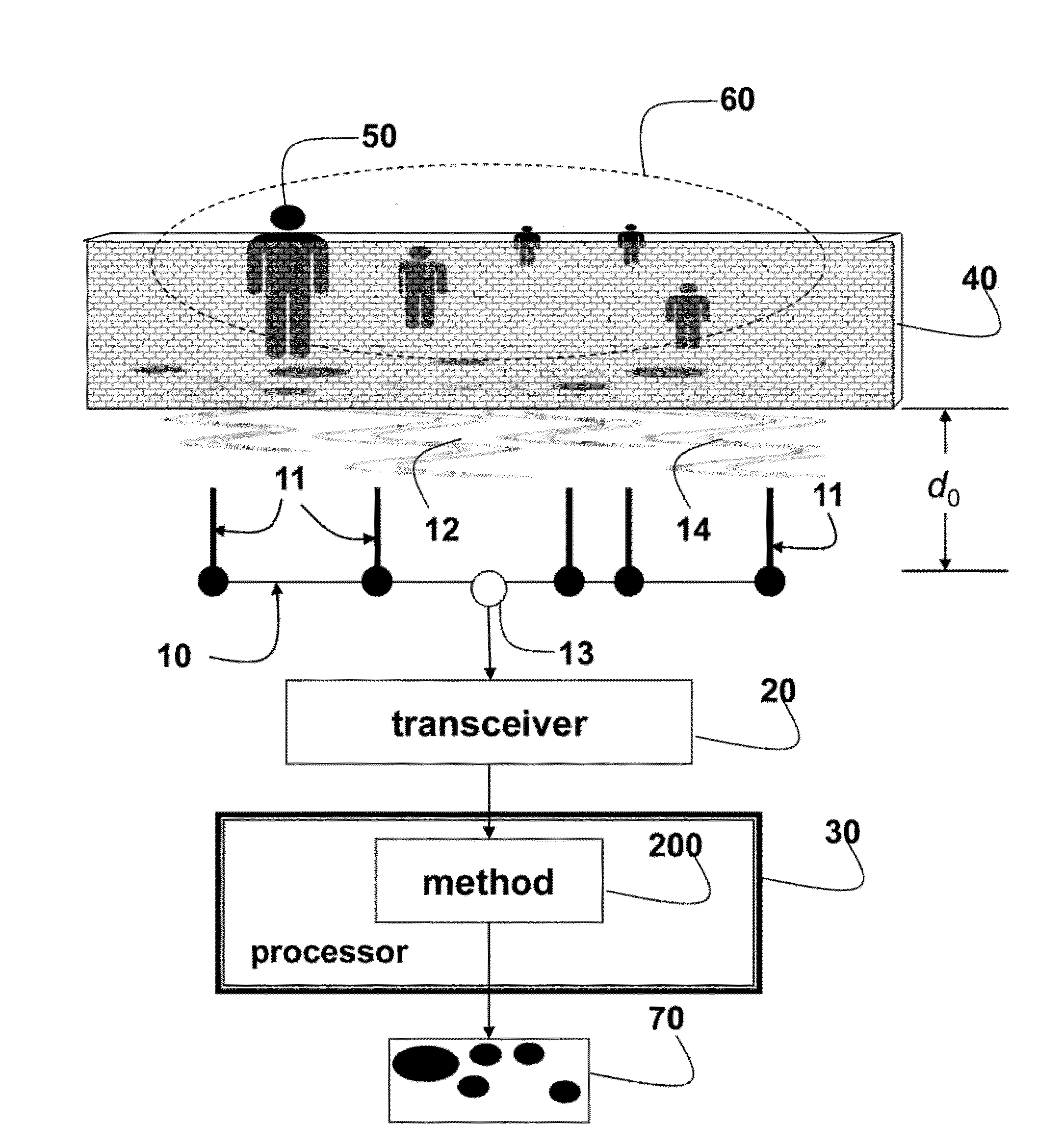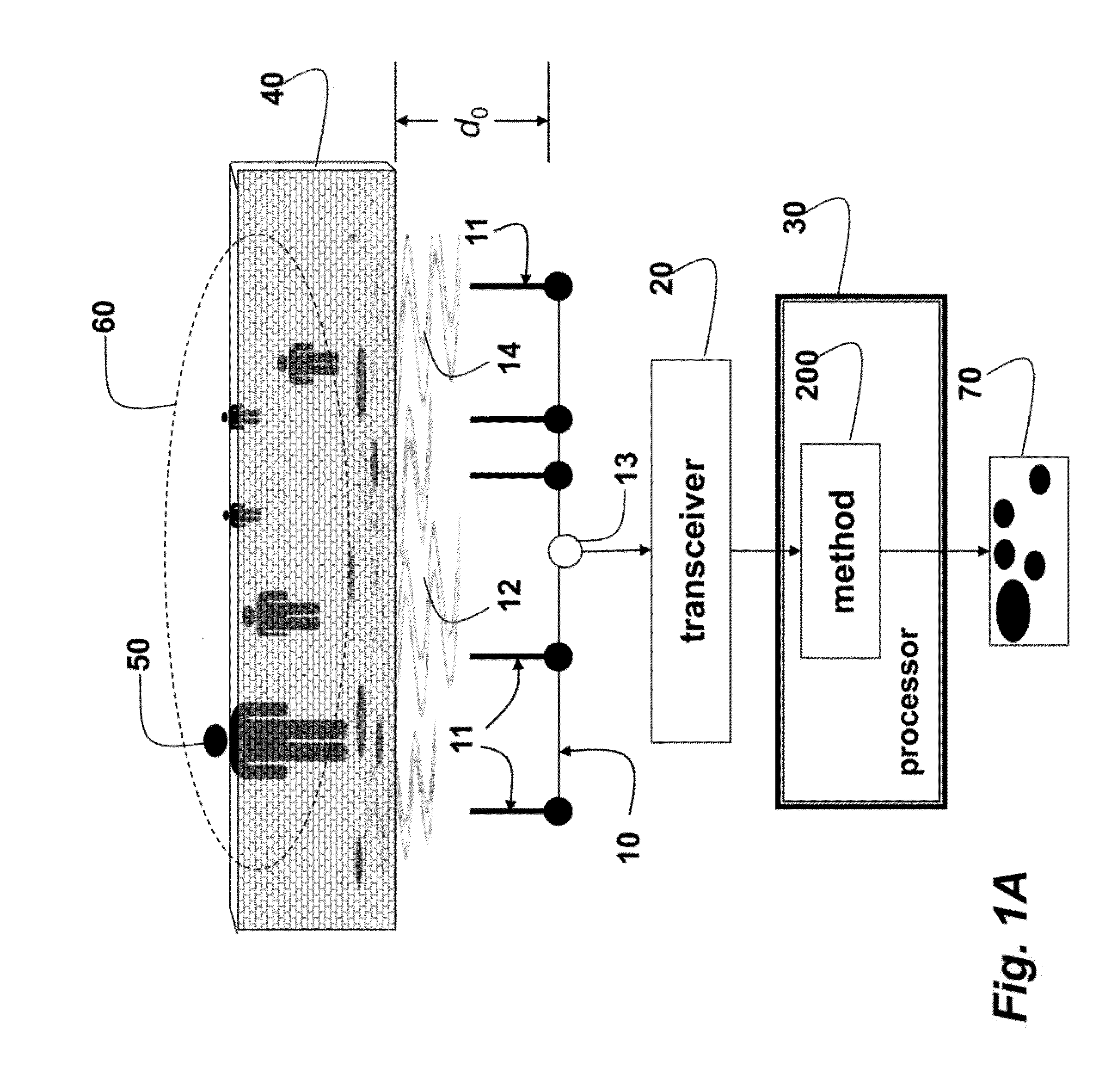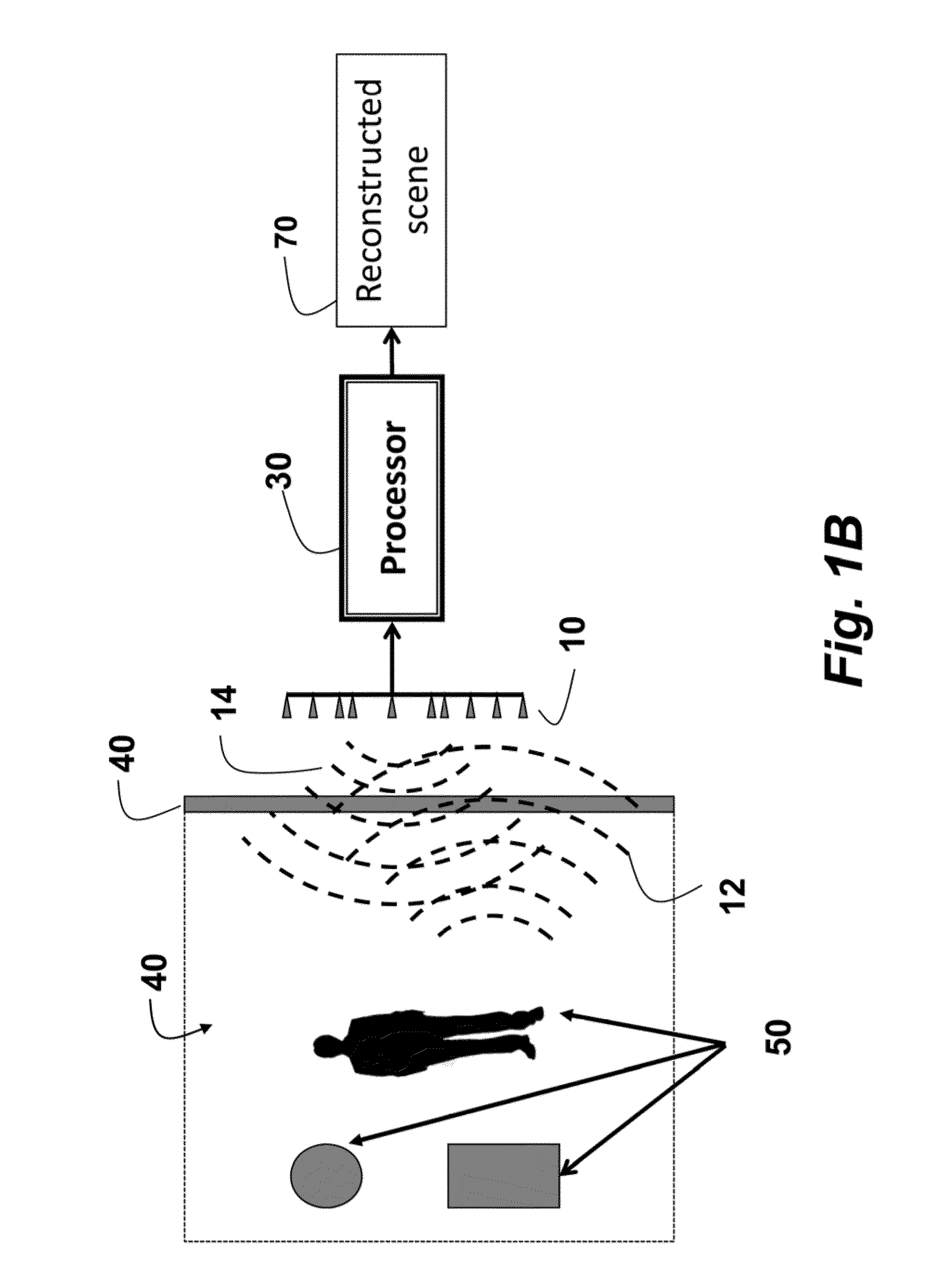Method and System for Through-the-Wall Imaging using Compressive Sensing and MIMO Antenna Arrays
a compressive sensing and antenna array technology, applied in the field of through-the-wall imaging, can solve the problems of ghost artifacts in images that appear as noise, and the methods suffer from the increased sidelobes of the array, so as to improve the radar imaging system and reduce the cost and complexity of through-the-wall imaging
- Summary
- Abstract
- Description
- Claims
- Application Information
AI Technical Summary
Benefits of technology
Problems solved by technology
Method used
Image
Examples
Embodiment Construction
[0023]System Setup
[0024]As shown in FIGS. 1A and 1B embodiments of our invention provide a method and system for through-the-wall imaging (TWI) of objects 50 that do not require any prior knowledge of scene geometry. The method can reconstruct a scene 60 behind a wall 40.
[0025]The system includes a Multiple-Input-Multiple-Output (MIMO) antenna array 10, transceiver 20, and processor 30. The antenna comprises of multiple elements 11. In the prior, art the spacing of the elements is typically uniform and equal to half the wavelength of the transmitted signal. In some embodiments of this invention, an average inter-element spacing of the antenna elements is nonuniform and ranch larger than half the wavelength of the transmitted signal.
[0026]The transceiver transmits one or more pulses 14 using some or all of the antenna elements 11 of the antenna array. The transmitted pulse propagates through the wall 40 and are reflected by the possible objects 50 in a scene 60 behind the wall 40. Re...
PUM
 Login to View More
Login to View More Abstract
Description
Claims
Application Information
 Login to View More
Login to View More - R&D
- Intellectual Property
- Life Sciences
- Materials
- Tech Scout
- Unparalleled Data Quality
- Higher Quality Content
- 60% Fewer Hallucinations
Browse by: Latest US Patents, China's latest patents, Technical Efficacy Thesaurus, Application Domain, Technology Topic, Popular Technical Reports.
© 2025 PatSnap. All rights reserved.Legal|Privacy policy|Modern Slavery Act Transparency Statement|Sitemap|About US| Contact US: help@patsnap.com



